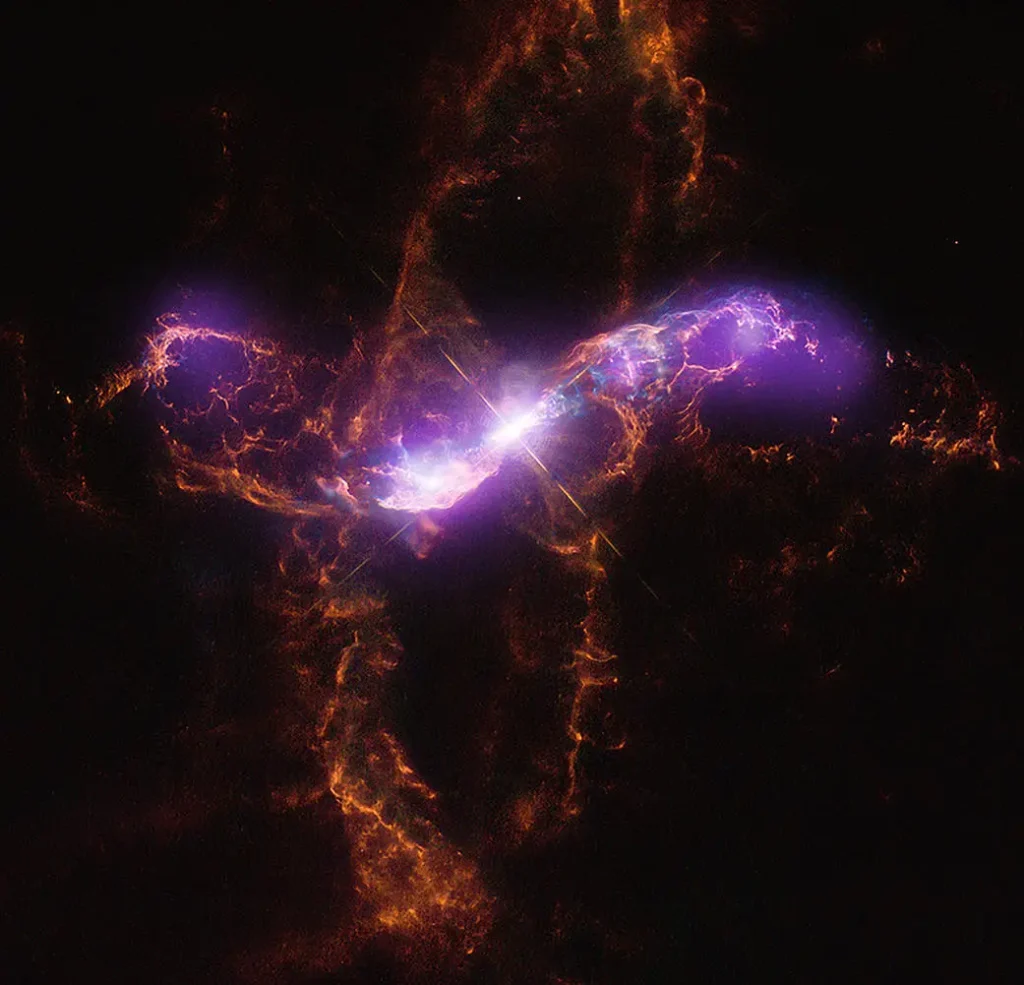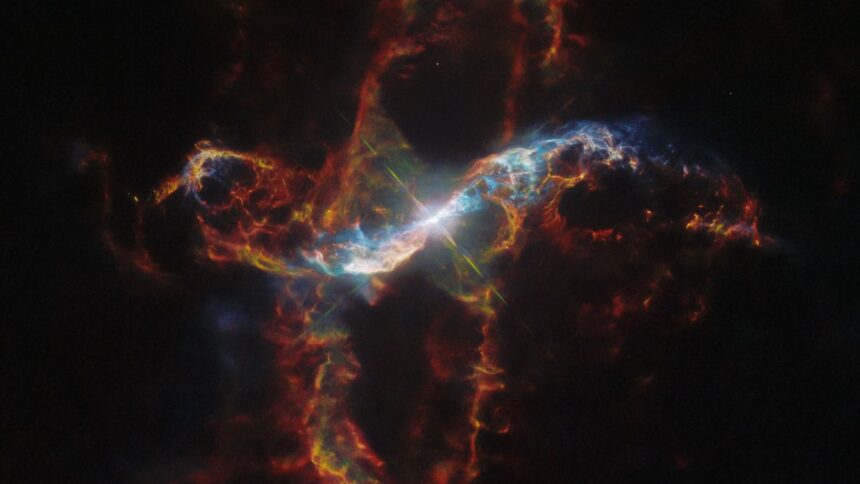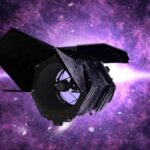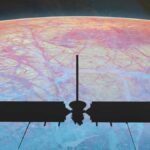NASA’s Hubble Telescope has captured an incredible ‘Stellar Volcano’ eruption in space. So far, the Hubble telescope has captured many beautiful photos of events in the universe. But, this time telescope focused on a fascinating hourglass-shaped nebula formed from the interactions of two closely paired stars. Some scientists have dubbed this event a “Stellar Volcano”.
R Aquarii
Hubble-captured images show the relationship between the stars and their explosions; this interaction can explain how the explosion contributes to the spread of elements throughout the universe. A captured event is happening in a binary star system called R Aquarii, located about 700 million light-years away in the constellation Aquarius.
The Hubble Telescope is one of the most important observatories of all NASA telescopes. It was launched in 1990; this telescope has given us a lot of information about the Universe so far and also discovered new exoplanets, blackhole, neutron stars and galaxies. It shows the distant galaxies in a close-up view and shares their data.
Captured images show a binary star system known as R Aquarii. R Aquarii is present in the constellation Aquarius; this system is made up of two stars, a red giant and a white dwarf. The red giant star is 400 times the size of our Sun, changing its brightness over about 390 days. White dwarf orbits the red giant every 44 years. These stars belong to a special case called ‘symbiotic stars’ in which two stars interact so closely that a white dwarf pulls material from the red giant star.
What are Symbiotic stars?
The term Symbiotic rises from the biology dictionary and refers to the closeness between different species. But, in astronomy, symbiotic stars are a pair in which one is a red giant and the other is a white dwarf; a red giant shares mass with a denser white dwarf. Material from the red giant star accumulates on the surface of the white dwarf star, which leads to gigantic explosions.

Hubble telescope reveals a beautiful hourglass-shaped nebula, formed centuries ago due to the interaction between these two stars. You may want to know how this structure came to be; it is the result of gas ejections and a magnetic field pushing star material outward. This structure gives data about the processes that occur when matter is ejected into space.
Stellar Volcano Like a gigantic hydrogen bomb
Scientists feel the explosion-like gigantic hydrogen bomb. When the white dwarf star reaches its maximum gravitational pull, it withdraws a large amount of material from the red giant. When a white dwarf accumulates enough material, it ignites a big thermonuclear explosion, similar to a “gigantic hydrogen bomb”.
The explosion causes sending streams of glowing gas to spread into space at a speed of more than 1 million mph. It has enough speed to cover the distance between Earth and Moon within 15 minutes. This immense speed shows how powerful forces play their role during the interactions between the two stars.
The explosion in the R Aquarii system creates energy and light but, along with it, produces and distributes heavier elements like carbon, nitrogen and oxygen. All these elements are the most important elements that act as the building blocks of life on planets, and such processes play an important role in redistributing them across the Universe.
Along with the Hubble telescope, the Chandra X-ray Observatory has also observed this R Aquarii star system. By focusing on X-ray emissions, Chandra has helped detect changes in the nebula’s structure, such as the formation of shockwaves. This data provides information about the timing of eruptions and the effects of their high-energy interactions.




